Mesopotamia as a regional toponym relates to a conglomeration of areas from various modern-day nations, including Iraq, Kuwait, Syria, Turkey, and even the Iraq-Iran borders. Now historically, the relevance of this ‘meta-region’ relates to it being the focal point of the earliest developments of the Neolithic Revolution, circa 10,000 BC. In essence, Mesopotamia is widely considered to have fueled some of the most crucial inventions in human history, ranging from the cursive script, advanced astronomy to complex mathematics.
However, at the same, we must understand that the Mesopotamian culture was not a homogenous entity; rather it was the melting pot of different civilizations, factions, city-states, and even ethnicities (from the Semitic Akkadians to the Indo-European Hurrians) – and most of them were influential during various periods of time. And almost mirroring the abstruse nature of the so-called Mesopotamian culture comes forth the scope of ‘Mesopotamian inventions’.
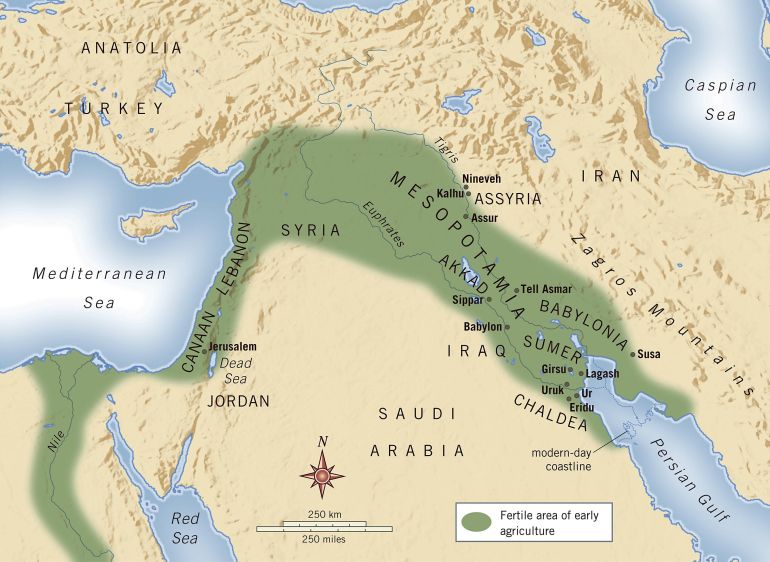
In essence, we as history enthusiasts shouldn’t view these Mesopotamian inventions as singular events that happened overnight. On the contrary, many of these historical innovations were brought forth by centuries of development since the epoch of the Neolithic Revolution. So without further ado, let us take a gander at 12 ancient Mesopotamian inventions you should know about.
Contents
Copper Fabrication
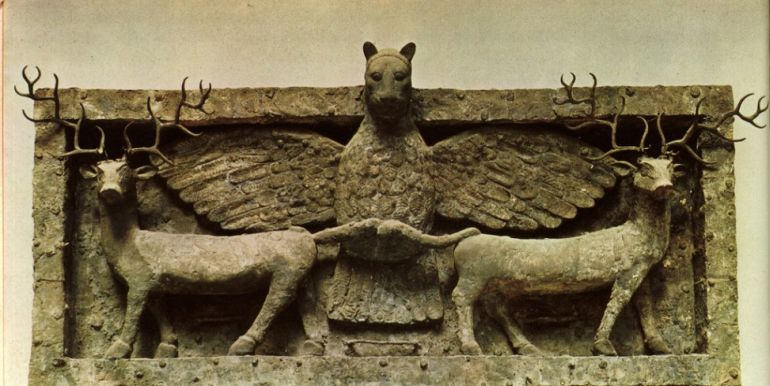
When it comes to the history of metals, copper became the first metal to be smelted from its ore (circa 5000 BC), the first metal that was cast in a mold (circa 4000 BC), and the first metal that was alloyed with yet another metal (tin) to create bronze (circa 3500 BC).
And while copper counts among the few metals that can be used (to some degree) in its natural form, as opposed to extraction from ore, its full-scale usage in a fabricated form was probably kick-started by the Sumerians, around 5,000 years ago. In fact, the fabrication of copper as one of the major Mesopotamian inventions rather coincides with the growth of organized urban spaces into veritable cities like Sumer, Uruk, Ur, and al’Ubaid.
In terms of ‘products’, the Mesopotamians started out with copper arrowheads, harpoons, razors, and other smaller objects. Over the next centuries, they made their transition to more complex geometric forms, like chisels, elaborate jugs, and drinking vessels. Suffice it to say, there are some exquisite copper objects that are a fitting testament to the ancient craftsmanship of the Sumerians.
One pertinent example would relate to the impressive Imdugud Relief (pictured above), found at Al’Ubaid, dating from about 3100 BC. Depicting a lion-headed eagle holding two stags by their tails, the exquisitely-crafted relief flaunts its beaten copper arrangement within a copper frame on a wooden background.
Free Spinning Wheel
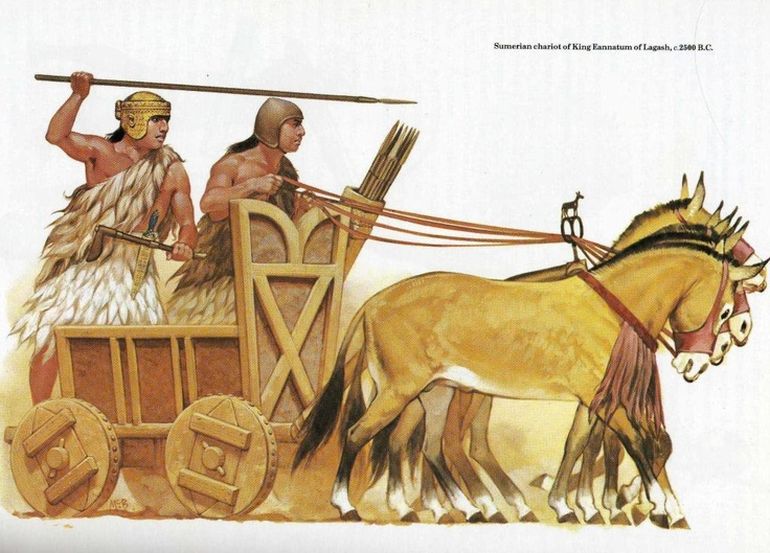
When it comes to the scope of the wheel, our popular notion harks back to faster modes of transportation. However archaeological evidence of the world’s first free spinning wheel actually pertains to the potter’s variety, with the oldest surviving specimen being found in the southern Mesopotamian city of Ur, dating from circa 3100 BC. Such designs were already in use in the earlier centuries of the 4th millennium BC (possibly as early as 4000 BC).
And interestingly enough, in spite of its 6000-year-old legacy, the free-spinning wheel is considered one of the relatively ‘late’ Mesopotamian inventions, considering that by circa 4th millennium BC, humans had already made innovations in other fields, including woven cloth, rope, basket weaving, and even sailboats.
Furthermore, as opposed to the majority of other inventions, the wheel was invented purely out of human imagination. Simply put, a pitchfork was inspired by forked branches, or even our modern flying machines were inspired by birds; but the wheel was designed solely to aid in the functioning of human-made objects like potter’s wheel and transportation carriages.
And pertaining to the latter, the wheel-axle combination for vehicles/chariots was possibly developed circa 3500 BC. To that end, quite intriguingly, the oldest evidence of such a wheel-axle system doesn’t actually come from Mesopotamia; rather it hails from the Stare Gmajne site near Ljubljana in Slovenia (dating back to circa 3200 BC).
Cursive Writing
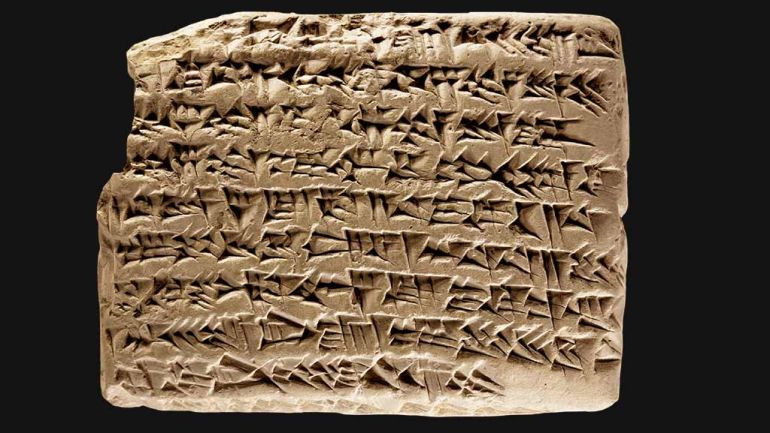
Writing directly relates to the greatest of human and Mesopotamian inventions – language, and as such represents the physical manifestation of our power of speech. But while the spoken language was probably in use by 35,000 BC, its fully developed written form (as opposed to proto-writing) only made the ‘debut’ during the latter part of the 4th millennium BC (circa 3500-3100 BC) in Sumer, southern Mesopotamia.
This form of early cursive writing is known as the cuneiform – and it is widely viewed as the greatest contribution of the city of Uruk. Interestingly enough, ancient Egyptians also formulated their native writing system by 3100 BC; and one hypothesis, though hotly debated, suggests that their system (corresponding to First Dynasty) was partly influenced by the Mesopotamian cuneiform.
The very word ‘cuneiform’ is derived from the Latin cuneus, meaning a ‘wedge’. This is because this ancient writing style resembled wedge-like marks that were made in wet (soft) clay with a reed implement known as a stylus. The earlier forms of writing mostly consisted of pictographs (or word signs) that mainly focused on tangible subjects, like floods, gods, or kings.
Over time, Mesopotamian writing took the route of phonograms, thus allowing it to depict more complex, intangible subject matter, like the will of the gods or the honor of a man.
Literature
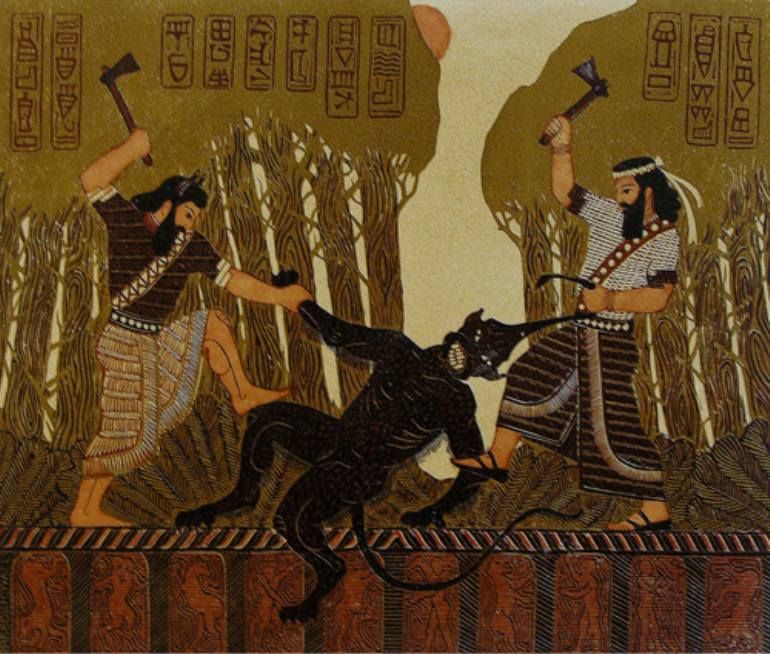
Pertaining to one of the major Mesopotamian inventions – cursive writing, the development of literature was a direct effect of written language, an achievement generally attributed to the Sumerians circa 3400 BC.
And while these ‘written’ cuneiform texts, inscribed on clay tablets and reliefs, started out as recording devices for administrative purposes, over time Sumerians also copied literature pieces that presented tales, myths, and essays. In that regard, the world’s oldest known literature pieces pertain to two such surviving specimens – the Kesh Temple Hymn and the Instructions of Shuruppak.
The Kesh Temple Hymn (also known as the Liturgy to Nintud) is basically related to a series of Sumerian clay tablets that were inscribed circa 2600 BC. From the archaeological perspective, several fragments of the tablets were discovered in the early 20th century, mostly from the temple library at the ancient Sumerian city of Nippur.
Since then experts have been able to compile much of the myth by various translations, along with analytical and comparative procedures that entailed the assessment of similar (yet different versioned) tablets.
The other literary work that is generally considered among the oldest in the world (and possibly the world’s oldest surviving written text) pertains to the Instructions of Shuruppak. Touted as one of the better examples of Sumerian wisdom literature, the ‘piece’ comprises a group of cuneiform tablets dating from around 2600-2500 BC, originally discovered at Abu Salabikh (around 12 miles from ancient Nippur).
These fragments contain a list of counsels that are presented like proverbs – comprising one to three lines of cuneiform. The range of wisdom offered by a father to his son (and eventual hero) oscillates between simple practicality to upholding morality –
You should not locate a field on a road.
You should not make a well in your field: people will cause damage on it for you.
A loving heart maintains a family; a hateful heart destroys a family.
You should not play around with a married young woman: the slander could be serious.
Do not pass judgment when you drink beer.
Standard Beer Recipes and Economy
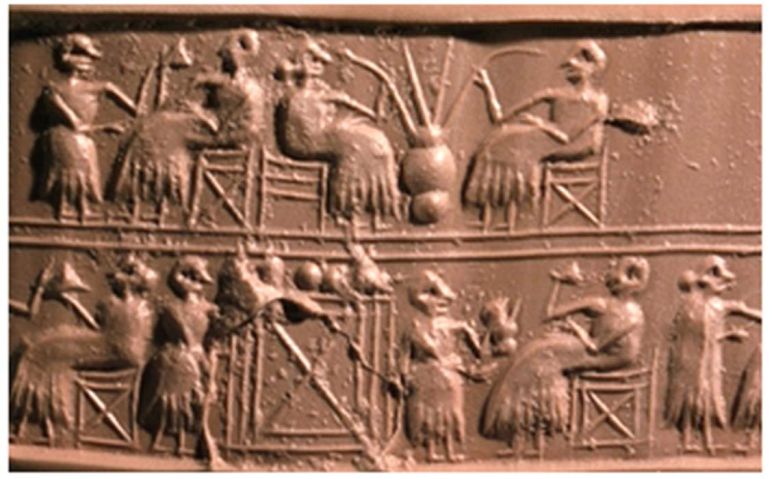
Beer in its various forms has been consumed at least since the 5th millennium BC, due to the easy fermentation processes involved in cereals with sugar content. However, like many of the oldest cultural achievements pertaining to humanity, the oldest known standard recipe for brewing beer comes from the land of Mesopotamia.
These earliest beer ‘inventions’ were possibly concocted with the aid of barley that was extracted from bread. Intriguingly enough, the Sumerians even had a tutelary goddess of beer (and alcohol) who was called Ninkasi. In fact, some of the excerpts from a 3900-year-old Sumerian poem honoring Ninkasi (the Hymn to Ninkasi), translated by Miguel Civil, read like this –
You are the one who soaks the malt in a jar,
The waves rise, the waves fall.
Ninkasi, you are the one who soaks the malt in a jar,
The waves rise, the waves fall.
.
.
.
When you pour out the filtered beer of the collector vat,
It is [like] the onrush of Tigris and Euphrates.
Ninkasi, you are the one who pours out the filtered beer of the collector vat,
It is [like] the onrush of Tigris and Euphrates.
Interestingly enough, beer was also related to the feudal economy of many Mesopotamian city-states. For example, a 5,000-year-old artifact originally salvaged from the city of Uruk (in modern-day Iraq) was inscribed with the pictorial language of cuneiform. This tablet dating from around 3300 BC, depicts a human head eating from a bowl and drinking from a conical vessel. The bowl represents ‘ration’, while the conical glass alludes to the consumption of beer.
And more than just this human visage, the tablet is also marked with scratches that basically record the quantity of beer assigned to each worker. Simply put, the ancient Mesopotamian artifact is the world’s oldest known payslip that rather hints at how the hierarchical system of workers and employers existed even five millenniums ago – and they were connected by the exchange of beer (as payment).
Urban Planning
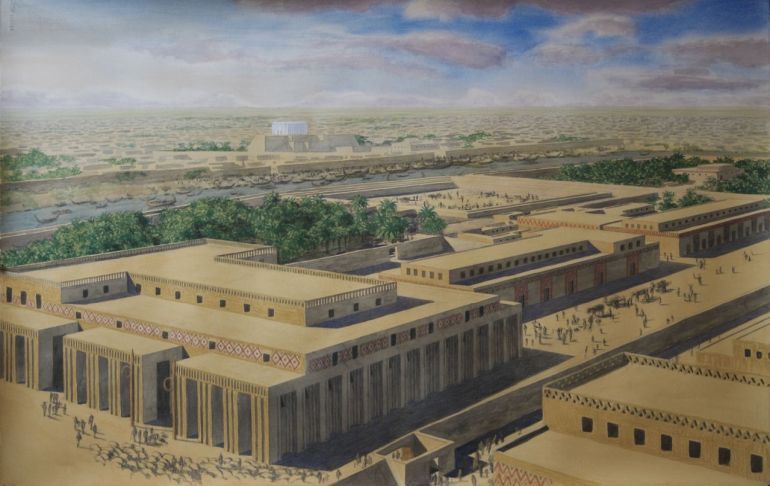
Quite intriguingly, the first known description of urban planning was found in the Epic of Gilgamesh –
Go up on to the wall of Uruk and walk around. Inspect the foundation platform and scrutinize the brickwork. Testify that its bricks are baked bricks, And that the Seven Counsellors must have laid its foundations. One square mile is city, one square mile is orchards, one square mile is claypits, as well as the open ground of Ishtar’s temple. Three square miles and the open ground comprise Uruk. Look for the copper tablet-box, Undo its bronze lock, Open the door to its secret, Lift out the lapis lazuli tablet and read.
The paragraph pertains to the city of Uruk, a settlement that played its leading role in the early urbanization phase of Sumer (by circa 3500 BC), the southern part of Mesopotamia. Now while practically, the very scope of urban planning relates to a development pattern (that started from the Neolithic Revolution) rather than being one of the ‘sudden’ Mesopotamian inventions, most historians believe that it was the Sumerians who emerged as the first society to construct planned cities as an extension of their burgeoning economy.
In essence, these economic strongholds were planned to some degree, while also being affected by the organic growth of populated sprawls. Such early forms of urban planning some 5000 years ago were mainly relegated to the arrangement of the defensive walls, the central district of temples and palaces, the main canal that functioned as the economic lifeline of the settlement, and the major roads that connected the transportation network of the stronghold.
It should also be noted that many of these cities were planned around the temple due to the fact that these core religious structures often predated the founding of the settlement itself.
Board Games
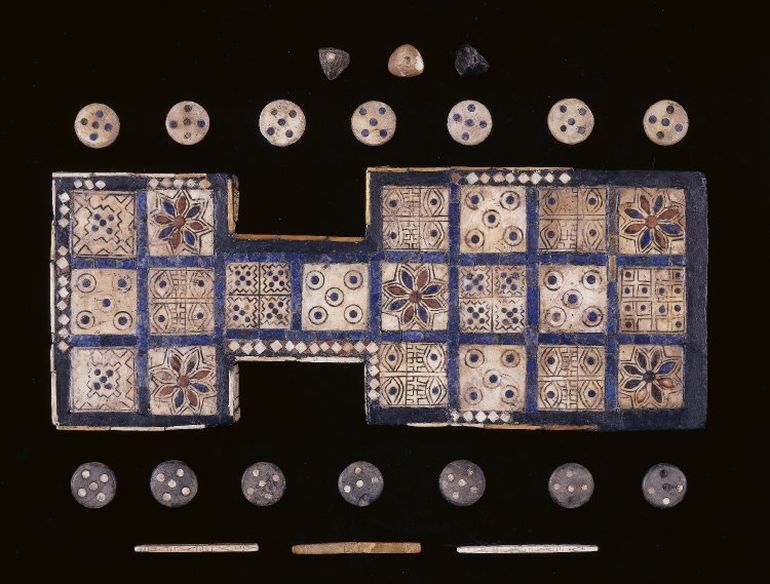
The oldest known archaeological evidence of a board game comes from 49 small carved painted stones that were discovered inside a burial mound at Başur Höyük, in southeast Turkey (traditionally, the northern extent of Mesopotamia), dating from circa 5000 BC. Experts have also found similar pieces in both Iraq and Syria, thus alluding to the prevalence of some rudimentary form of a board game that was played by the inhabitants of Mesopotamia.
Now considering that playing games are perceived as a recreational activity, the scope does hint at increased levels of urbanization with fully developed agricultural systems that allowed folks (especially the richer ones) free time to pursue their fun hobbies.
Now beyond their narrow categorization as one of the Mesopotamian inventions, we must understand that over the course of centuries, the complexity and appeal of board games must have increased – so much so that indoor gaming (as a recreational activity) spread to other parts of the world.
For example, the earliest mention of Senet, one of the oldest known board games, was found in an ancient Egyptian hieroglyph dating from 3100 BC. Mesopotamians also had their dedicated board game, in the form of what is known as the Game of Twenty Squares (or the Royal Game of Ur), as could be evidenced by two surviving boards dating from 2600 BC.
Soap
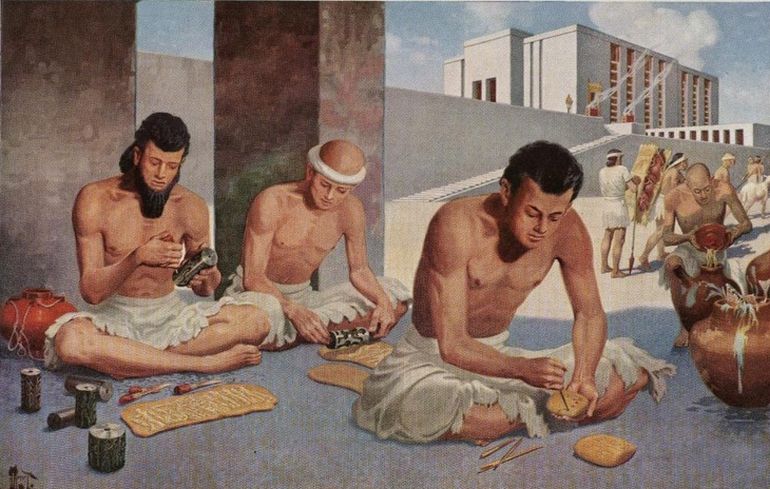
The history of soap, unlike its function of cleaning, is a bit murky. According to most scholars, the first evidence of a soap-like substance harks back to 2800 BC. But confusion arises when it comes to this substance’s original inventor, with some sources pointing towards the ancient Babylonians.
But historically, Babylonia as a political entity emerged several centuries after the stated date. So we must attribute the honor of inventing soap to their culturally-linked brethren – the Sumerians, who held sway over Mesopotamia for most of the 3rd millennium BC (which makes soap one of the incredible Mesopotamian inventions).
In any case, what we know is that such a concoction was made by mixing animal fats with wood ash and water. As for its functionality, the ancient Mesopotamian people probably used their concocted cleaning products for washing wool used in textiles. The oldest ‘soaps’ were also used for ritualistic purposes by Sumerian priests when they purified themselves before sacred rites.
And in later years, some of the modified versions were possibly even used for treating skin diseases. Given these variant modes of use, it comes as no surprise that a few Mesopotamian tablets even make mention of the different methods for making soap in the pictorial cuneiform script.
Advanced Cartography
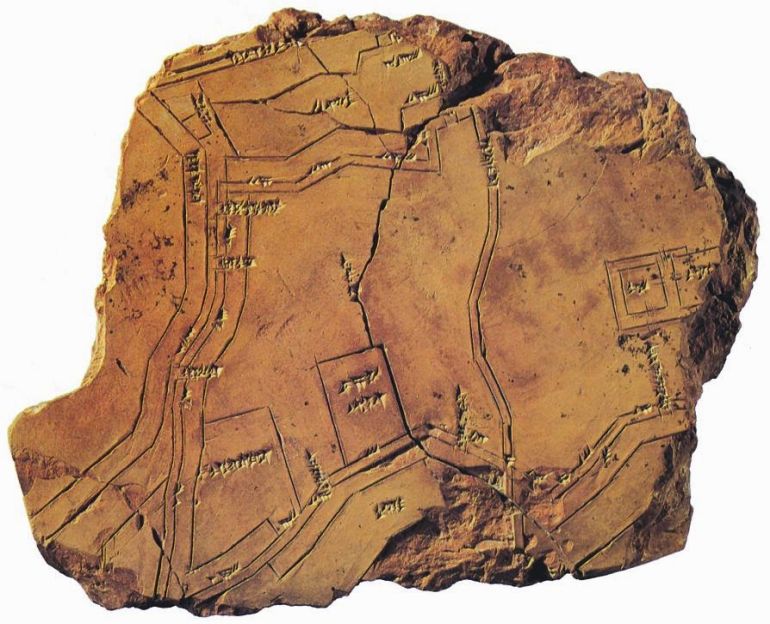
Intriguingly enough, the earliest known maps in human history denote the stars instead of the earth’s landscape. And while there are numerous pieces of evidence entailing cave paintings and rock carvings that represent local topographical elements like hills and rivers (dating from as early as 25000 BC), cartography as a scientific pursuit with accurate surveying techniques, was developed in Mesopotamia, which hints at it being one of the Mesopotamian inventions.
One example would pertain to the Nuzi map, dating from circa 2360-2180 BC – sometimes touted as the world’s oldest known roadmap. The particular clay tablet is inscribed only on the obverse, and it possibly depicts a city on the lower-left corner (probably Maskan-dur-ebla) along with topographical features like two mountain ranges and a river (or canal).
But since we are talking about Mesopotamian inventions, a more ‘precise’ example of advanced cartography would relate to the 15th century BC clay tablet that focuses on a part of the ancient Babylonian city of Nippur. The 18 x 21 cm fragment (pictured above) aptly marks the principal ziggurat complex, Ekur, and Ekiur on the right edge, along with storehouses, a verdant ‘park-like zone, and another enclosure by the river Euphrates.
Additionally, the tablet represents a wall around the city, pierced by seven gates – and many of these man-made features are named and marked by measurements as we find in our modern sitemaps.
Law Code
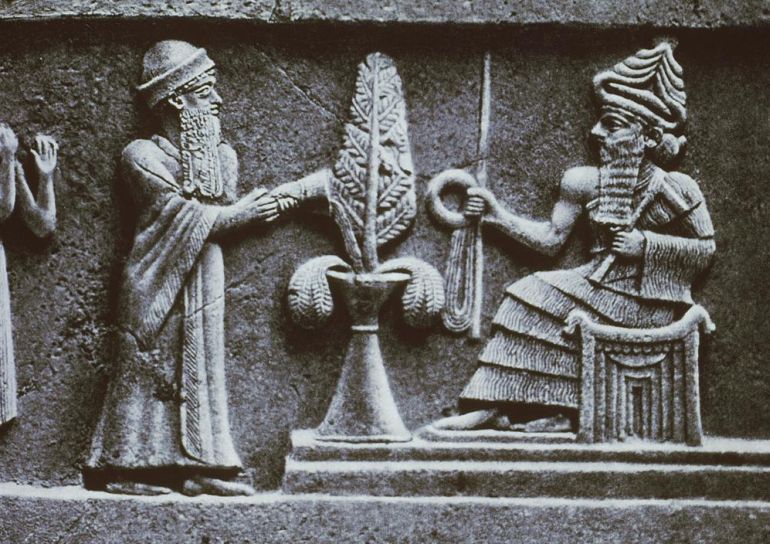
A common misconception relating to the Code of Hammurabi is its presumed nature of being the oldest set of codified laws in human history. That is however not true from the historical perspective, with the honor (of the oldest surviving law code) probably belonging to the Code of Ur-Nammu, which was inscribed circa 2100 – 2050 BC.
In any case, both of these sets of laws are Sumerian in origin, thus counting as one of the major Mesopotamian inventions. Moreover, many scholars have also put forth their views regarding an even older law code encompassing the legal reforms of Urukagina, the king of the city-state Lagash in Mesopotamia, from circa 24th century BC. Unfortunately, no extant text has survived from this legal code, and so much of its content has been surmised from other ancient references.
From the literary perspective, the Code of Ur-Nammu was composed in Sumerian, and as such 30 of its 57 prescribed laws have been reconstructed by historians. Some fascinating (and often bizarre) examples are presented as follows –
If a man violates the right of another and deflowers the virgin wife of a young man, they shall kill that male.
If a man is accused of sorcery he must undergo ordeal by water; if he is proven innocent, his accuser must pay 3 shekels.
If a man knocks out a tooth of another man, he shall pay two shekels of silver.
If a man appeared as a witness, and was shown to be a perjurer, he must pay fifteen shekels of silver.
If a man stealthily cultivates the field of another man and he raises a complaint, this is however to be rejected, and this man will lose his expenses.
Scientific Astronomy
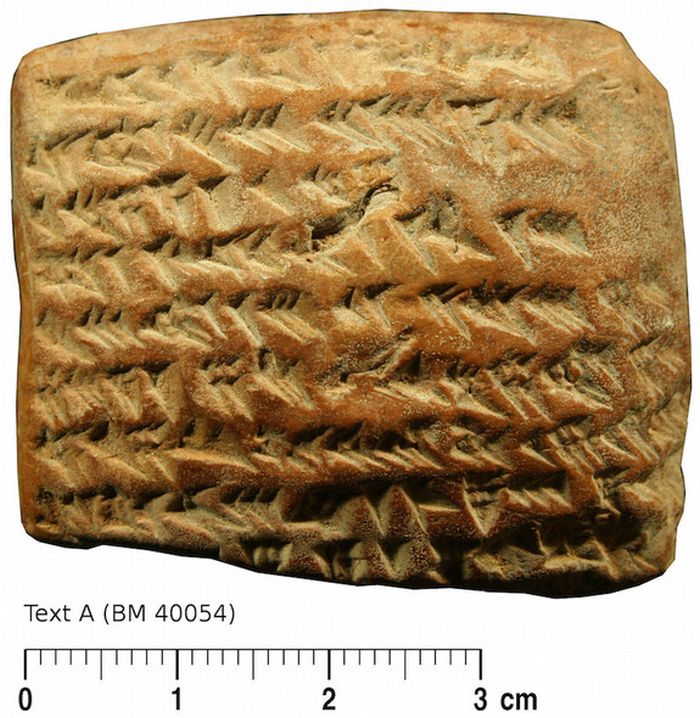
Before delving into the history of astronomy, we must understand that both Neolithic and Bronze Age Europeans had quite an advanced grasp of astronomy, as could be evidenced by the prehistoric arrangements of the Goseck circle to the so-called Golden hats. However, what we know as scientific astronomy (or ironically ‘Western’ astronomy) had its origins in Mesopotamia.
Essentially considered as one of the Mesopotamian inventions of the Sumerians, our present-day knowledge of Sumerian scientific astronomy is unfortunately limited to place-value number systems. However, the latter Babylonians more than makeup for it with their incredible star catalogs (dating from circa 1200 BC) that recognize the periodic scope of astronomical phenomena, along with the importance of mathematics in determining the related predictions.
One pertinent example comes from the Tablet 63 of the renowned Enūma Anu Enlil texts (compiled during 1595–1157 BC), also known as the Venus tablet of Ammi-saduqa, which tabulates the first and last visible risings of Venus over a period of about 21 years.
Simply put, it is the first known record of a planet being recognized as periodic. In another instance, a Babylonian tablet dating some time from 350-50 BC displays some form of abstract geometry (precursor to calculus) that was used to plot the changeable movements of Jupiter.
Complex Mathematics
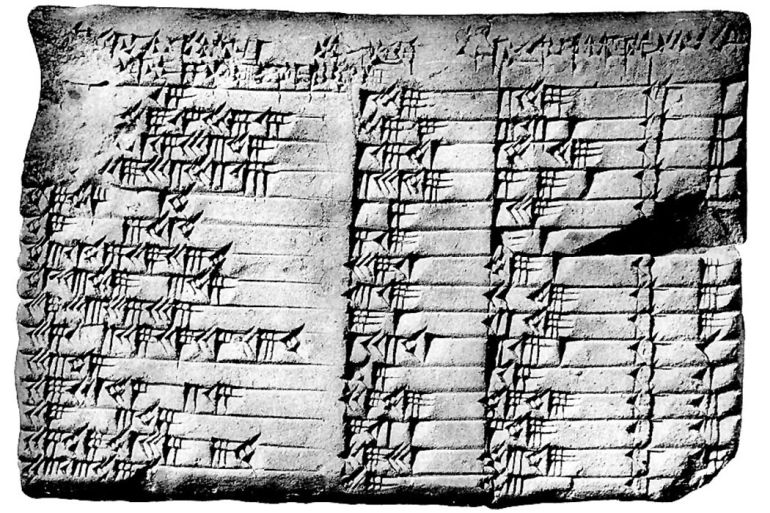
Once again, if we assume the practical course of action, the development of language must have heralded the adoption of simple mathematics, with finger counting and even decimal systems making their way into daily affairs. Early humans must have also furnished their recording and counting systems with the use of sticks for making notches.
However, as we fleetingly mentioned in the earlier entry, the oldest known evidence of geometrical and algebraic calculations (i.e., complex mathematics) comes from a plethora of Babylonian clay tablets, dating from circa 1750 BC.
In fact, ancient Sumerians are known to have devised the earliest forms of written mathematics, including the system of metrology (dating from 3000 BC) and multiplication tables (dating from 2500 BC) – thus alluding to the scope of Mesopotamian inventions in this vast field.
On the other hand, the later Babylonians could boast one of their major mathematical Mesopotamian inventions in the form of the sexagesimal (base-60) numeral system, which led to the modern-day use of 60 for seconds, minutes, and degrees.
Furthermore, the Babylonian notational system could represent both fractions and whole numbers and as such was considered as the most advanced system until the emergence of the Renaissance. History World has aptly described the ancient Babylonian form of complex mathematics –
A typical Babylonian maths question will be expressed in geometrical terms, but the nature of its solution is essentially algebraic. Since the numerical system is unwieldy, with a base of 60, the calculation depends largely on tables (sums already worked out, with the answer given for future use), and many such tables survive on the tablets.
Featured Image Credit: Bruce Long / Foundry
And in case we have not attributed or misattributed any image, artwork, or photograph, we apologize in advance. Please let us know via the ‘Contact Us’ link, provided both above the top bar and at the bottom bar of the page.
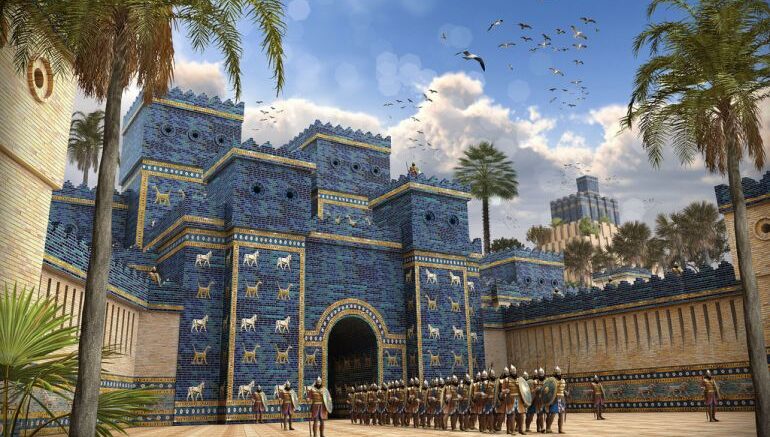

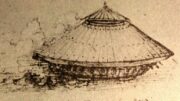

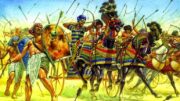
Be the first to comment on "Ancient Mesopotamian Inventions You Should Know About"